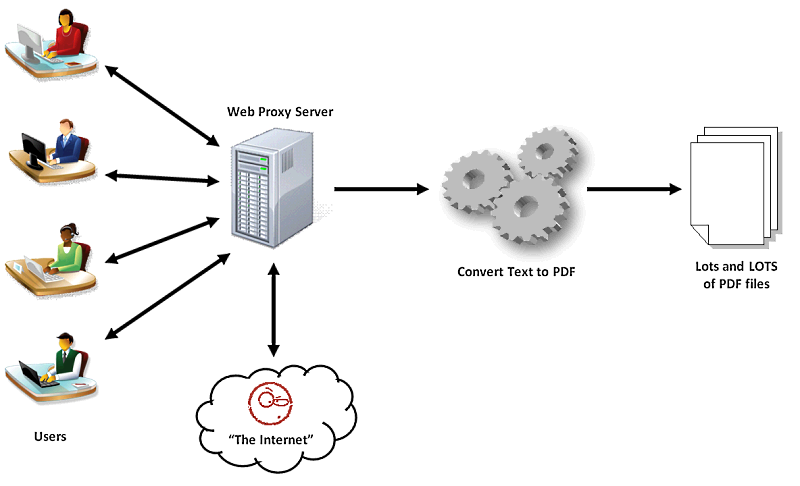“HEY! YOU!” barked a frantic and unfamiliar fellow in a frumpled collared shirt who barged into Daniel’s cramped little office.
“Are you running...," he asked while consulting a clipboard, “Google Desktop??”
Daniel started to formulate an affirmative answer, but before he could complete the word “Yes”, his interloper interjected “WHAT!? TURN IT OFF!! It’s crashing the proxy server!!”
“Wait, what?” jumped in Daniel, “Crashing the proxy? It checks Gmail like...every 9 minutes! And just who the hell are you anyway?!”
Daniel’s adversary narrowed his gaze while tapping his clipboard on each word - “I said turn it off, so TURN. IT. OFF.”
“I find this all very hard to believe. I’m going to speak to Dave.”
Taking it to Dave
Daniel was on pretty good terms with Dave. As the company’s Lead (or rather, sole) Network Technician, he felt Daniel’s pain considering that Daniel was the company's Lead (again, which meant only) Developer and they helped each other out when they needed it, so it was a bit of a shock that he would get dinged without so much as a heads-up.
An inherited “crapplication” was something that Daniel could accept, however for something boneheaded as this, he needed an explanation.
“Tell me this then - do you mean to say that the office network that you designed is so fragile that 2kb of traffic a MINUTE was enough to take it down?!”
“Yeah, sorry about that man,” Dave began, “didn’t mean for Jim’s IT goons to get ahold of ya. Things just kind of went to hell in a handbasket real quick, ya know?”
Daniel glared a little as Dave leaned in and whispered “It sort of, well, um, wasn’t actually the network.”
A Dirty Little Secret
As it turned out, there was a little secret in the company.
At some point in the past, someone had "guessed" the login to the company's web server and had wreaked quite a bit of havoc.
In searching for a solution, a sweet talking snake oil software salesman fed into the Owner’s paranoia of being hacked and sold a whiz bang TCP-IP monitoring and security suite, custom-built server, service contract - the works. Since the owner wasn't convinced that the break-in wasn't internally motivated, the monitoring package was configured to record EVERY HTTP request originating from within the company's network in real time to a flat file on the network's web proxy server. The flat file was then processed into a PDF with the "bad" sites in red. This process took 10 minutes per employee and was run once per hour, every day, and was reviewed daily by IT management to ensure compliance.
Dave went on to explain that attempting to write the Google URL to the file every few minutes would lock the file (which was in use by the PDF process) and crash the whole thing. There was no recovery, and the proxy would simply hang with the Gmail URL being flagged as the "culprit" when really it was just terrible, terrible design.
In the end, Daniel removed Google Desktop, which was a bit of a pain for him, but it wasn’t all bad though. In fact, as a result of the experience, he gained some good reading! The aforementioned PDFs were stored in a shared network drive where any employee could easily read up on the owner's obsession with AdultFiendFinder, or the IT Head's hours spent browsing YouTube.


